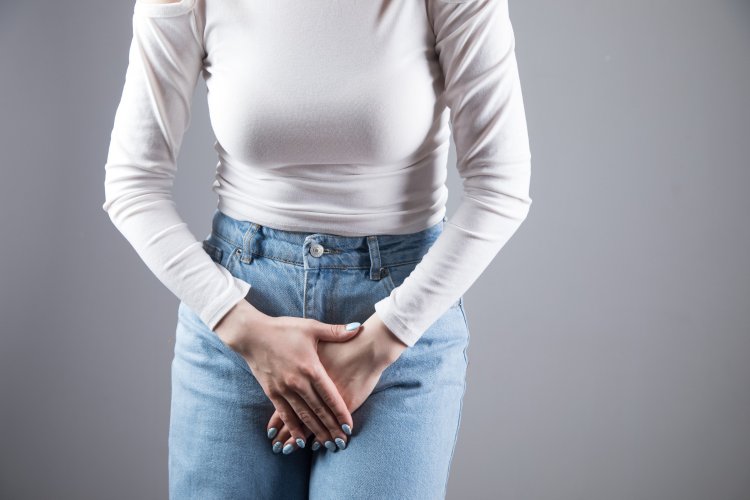Conquering Cystitis: Strategies for Relief and Prevention
Cystitis, a common urinary tract infection (UTI), affects millions of individuals worldwide each year. It is characterized by inflammation of the bladder, leading to a variety of symptoms that can range from mild discomfort to severe pain and inconvenience. In this comprehensive guide, we will delve into the intricacies of cystitis, exploring its causes, symptoms, treatment options, and preventive measures.

Introduction to Cystitis
Cystitis is a multifaceted condition that can arise from various underlying causes. While bacterial infection is the most common culprit, other factors such as bladder irritation, hormonal changes, and underlying health conditions can also contribute to its development. Understanding the root causes of cystitis is crucial for effective management and prevention.
Causes of Cystitis
a. Bacterial Infection
The majority of cystitis cases are caused by bacterial infection, with Escherichia coli (E. coli) being the most common pathogen. Bacteria can enter the bladder through the urethra and multiply, leading to inflammation and infection. Factors such as poor hygiene practices, sexual activity, and the use of certain contraceptives can increase the risk of bacterial cystitis.
b. Non-Infectious Factors
In addition to bacterial infection, cystitis can also be triggered by non-infectious factors such as bladder irritation from chemicals or irritants found in perfumed soaps, bubble baths, and feminine hygiene products. Radiation therapy for cancer treatment can also damage the bladder tissue, leading to radiation cystitis. Furthermore, underlying health conditions such as diabetes, kidney stones, and urinary tract abnormalities can predispose individuals to cystitis.
c. Interstitial Cystitis (IC)
Interstitial cystitis, also known as painful bladder syndrome, is a chronic form of cystitis characterized by bladder pain, urgency, and frequency without evidence of bacterial infection. The exact cause of IC is unknown, but it is believed to result from bladder inflammation or dysfunction. IC can be challenging to diagnose and manage, requiring a multidisciplinary approach involving urologists, gynecologists, and pain specialists.
Symptoms of Cystitis
The symptoms of cystitis can vary depending on the underlying cause and severity of the infection. Common symptoms include:
- Frequent and urgent need to urinate
- Pain or burning sensation during urination (dysuria)
- Cloudy or bloody urine
- Pelvic discomfort or pressure
- Foul-smelling urine
- Low-grade fever
It is essential to recognize these symptoms and seek medical attention promptly for proper diagnosis and treatment.
Diagnosis of Cystitis
Diagnosing cystitis typically involves a combination of medical history review, physical examination, and laboratory tests. Healthcare providers may perform a urinalysis to detect the presence of bacteria, blood, or other abnormalities in the urine. A urine culture may also be ordered to identify the specific bacteria causing the infection and determine the most appropriate antibiotic treatment. In some cases, imaging tests such as ultrasound or cystoscopy may be recommended to evaluate the bladder and urinary tract for signs of inflammation or other issues.
Treatment of Cystitis
Treatment for cystitis depends on its underlying cause and severity. For bacterial cystitis, antibiotics are the primary treatment to eliminate the infection. Commonly prescribed antibiotics include trimethoprim-sulfamethoxazole, nitrofurantoin, and fluoroquinolones. Pain relievers such as ibuprofen or acetaminophen may also be recommended to alleviate discomfort.
For interstitial cystitis, treatment focuses on managing symptoms and improving bladder function. This may involve a combination of medications (such as oral medications, bladder instillations, or nerve modulators), physical therapy, dietary modifications, and lifestyle changes. In severe cases, procedures such as bladder distention, botulinum toxin injections, or neuromodulation techniques may be considered to alleviate symptoms and improve quality of life.
Prevention of Cystitis
Preventing cystitis involves adopting healthy habits and minimizing risk factors that can predispose individuals to bladder infections. Key preventive measures include:
- Drinking plenty of water to maintain urinary tract health and flush out bacteria.
- Practicing good hygiene, including wiping from front to back after using the bathroom.
- Emptying the bladder fully and promptly after sexual intercourse to prevent the spread of bacteria.
- Avoiding irritants such as perfumed soaps, bubble baths, and harsh feminine hygiene products that can irritate the bladder lining.
- Wearing breathable cotton underwear and loose-fitting clothing to prevent moisture buildup in the genital area.
- Managing underlying health conditions such as diabetes or urinary tract abnormalities that may increase the risk of cystitis.
Cystitis is a common urinary tract infection characterized by inflammation of the bladder. While bacterial infection is the primary cause, various other factors such as bladder irritation, hormonal changes, and underlying health conditions can contribute to its development. By understanding the causes, symptoms, treatment options, and preventive measures for cystitis, individuals can take proactive steps to manage their bladder health and reduce the risk of recurrent infections.
In conclusion, cystitis is a multifaceted condition that requires a comprehensive approach to diagnosis, treatment, and prevention. With proper medical care and lifestyle modifications, individuals can effectively manage cystitis and improve their overall quality of life.
#Cystitis #Causes #Symptoms #Diagnosis #Treatment #Prevention #Healthcare
Disclaimer:
The information provided in this article is for educational purposes only and should not be considered medical advice. If you have any health concerns or are experiencing symptoms, it is important to consult with a healthcare professional, such as a doctor or clinic, for proper diagnosis and treatment. Always seek the advice of your doctor or other qualified health provider with any questions you may have regarding a medical condition. Do not disregard professional medical advice or delay in seeking it because of something you have read in this article.
What's Your Reaction?





















